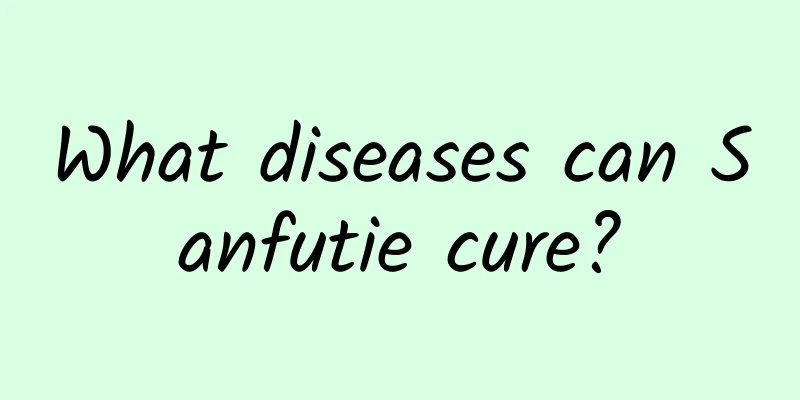What are the symptoms of testicular tumors? Clinical manifestations and treatment of testicular tumors

|
Testicular tumors, which are a type of weight that grows on the testicles, are mainly located inside the scrotum and can cause pain and heaviness in the patient. This disease is more common in young and middle-aged people and generally has no obvious symptoms. However, if it worsens, there will be complications such as bone and joint pain and difficulty breathing. The main treatments for testicular tumors include surgery, radiotherapy and chemotherapy. The following will introduce you to the relevant knowledge. 1. Symptoms Testicular tumors are often found accidentally as a lump in the scrotum, and there is also a feeling of localized dull pain and heaviness. Cryptorchidism may cause lumps in the groin or lower abdomen. The sudden enlargement of an atrophic testicle should be considered a tumor. Acute pain is uncommon, but 10% may have symptoms similar to orchitis or epidural inflammation. About 10% of patients mainly present with symptoms of metastatic cancer, such as swollen supraclavicular lymph nodes, lung metastasis, cough and dyspnea, etc. Testicular examination begins with the uninjured side to compare size, firmness, and contour. Tumors are generally not as sensitive as normal tissue. The epididymis is clearly separated, there is no adhesion between the tunica vaginalis and scrotum, and there is usually no fluid accumulation. The size of the tumor and the presence or absence of metastases often appear as an irregular mass within normal testicular tissue. Spread to the epididymis and spermatic cord accounts for 10% to 15%, and the prognosis is poor. 2. Clinical manifestations This disease is common in young and middle-aged men aged 20 to 40. The clinical symptoms are variable and may be asymptomatic. It is often discovered accidentally. As the lump gradually increases, a feeling of falling or heaviness may occur. A few patients may experience local skin redness, pain and other symptoms. Patients with cryptorchidism may present with a lump in the lower abdomen in the groin area. Late-stage patients may experience corresponding metastatic sites such as bone and joint pain, cough and dyspnea. During physical examination, the testicles are enlarged, firm and heavy, and lose their normal elasticity. The lump is closely related to the testicles, with unclear boundaries, a smooth surface or several large nodules. A small number of patients with testicular tumors with HCG secretion may have enlarged breasts. 3. Treatment The treatment of testicular tumors is divided into single treatment and combined treatment of surgery, radiotherapy and chemotherapy. Once a testicular tumor is confirmed, radical orchiectomy should be performed first, and then further treatment plans should be decided based on the results of pathological examination. The basic surgical method is orchiectomy and retroperitoneal lymph node dissection, the latter of which is particularly suitable for stage I and stage II non-seminoma germ cell tumors that are insensitive to chemotherapy and radiotherapy, such as embryonal tumors, teratomas and mixed carcinomas. Radiation therapy is extremely sensitive to seminoma, embryonal carcinoma and malignant teratoma are less sensitive to radiation, and choriocarcinoma is extremely insensitive to radiation. Radiation therapy can kill tumor tissue without causing obvious damage to adjacent normal tissue and is currently widely used in clinical practice. Testicular tumors respond well to chemotherapy. It is generally believed that chemotherapy has a better therapeutic effect on seminoma. It is also effective for embryonal carcinoma and choriocarcinoma, especially when several drugs are used in combination. The effect is better. It is less effective for teratoma. Chemotherapy also has a certain effect on advanced or recurrent cases. Therefore, radical orchiectomy and retroperitoneal external beam radiotherapy can be used for localized seminoma, with a cure rate of over 90%. Chemotherapy is used for metastatic seminoma. The most effective triple drug is cisplatin, bleomycin and etoposide, with a remission rate of about 90%. For localized nonseminoma, close follow-up or retroperitoneal lymph node dissection is performed after radical orchiectomy. Advanced nonseminomatous tumors are treated with chemotherapy after radical orchiectomy and subsequent retroperitoneal lymph node dissection. The therapeutic effect of combined treatment is better than that of single treatment. Generally, local recurrence or distant metastasis is carefully analyzed based on the pathological type, development trend, and general condition before local or systemic treatment is initiated. |
<<: What are the symptoms of palms of the hand? Causes and prevention of liver palms
>>: What is neurotic syndrome? Symptoms and care methods of neurotic syndrome
Recommend
What to drink for gout? What to drink for gout?
In the past decade or so, the incidence of gout h...
The difference between real and fake Cordyceps
How to distinguish the authenticity of Cordyceps ...
Is forceps delivery also considered a normal birth?
Giving birth is a major event for women, and it h...
Can nephritis be completely cured? Preventing nephritis is important!
Can nephritis be completely cured? Nephritis is i...
Thin hair with visible scalp
For some people with sparse hair, their hair appe...
Herpes Chinese medicine formula
Herpes is a skin disease. People often develop he...
What disease could a lump in the neck be a sign of?
The neck is a relatively vulnerable part of the h...
How does Traditional Chinese Medicine treat dysmenorrhea?
Dysmenorrhea is a problem that many women have to...
What to do if you have back pain after one month
If a woman experiences back pain just after one m...
Is it beneficial for diabetics to eat bitter vegetables?
The incidence of diabetes is getting higher and h...
Things to note about bone hyperplasia
Most young people today live with their grandpare...
What are the effects of turmeric?
Curcuma can effectively help improve the body'...
What to do if your thighs ache after working out
Faced with the fast-paced society today, many peo...
There are actually many "magic pills" growing on your body
Medicines are used to treat diseases in the human...
How about zirconium dioxide all-ceramic teeth
People have good teeth, which makes eating very c...









